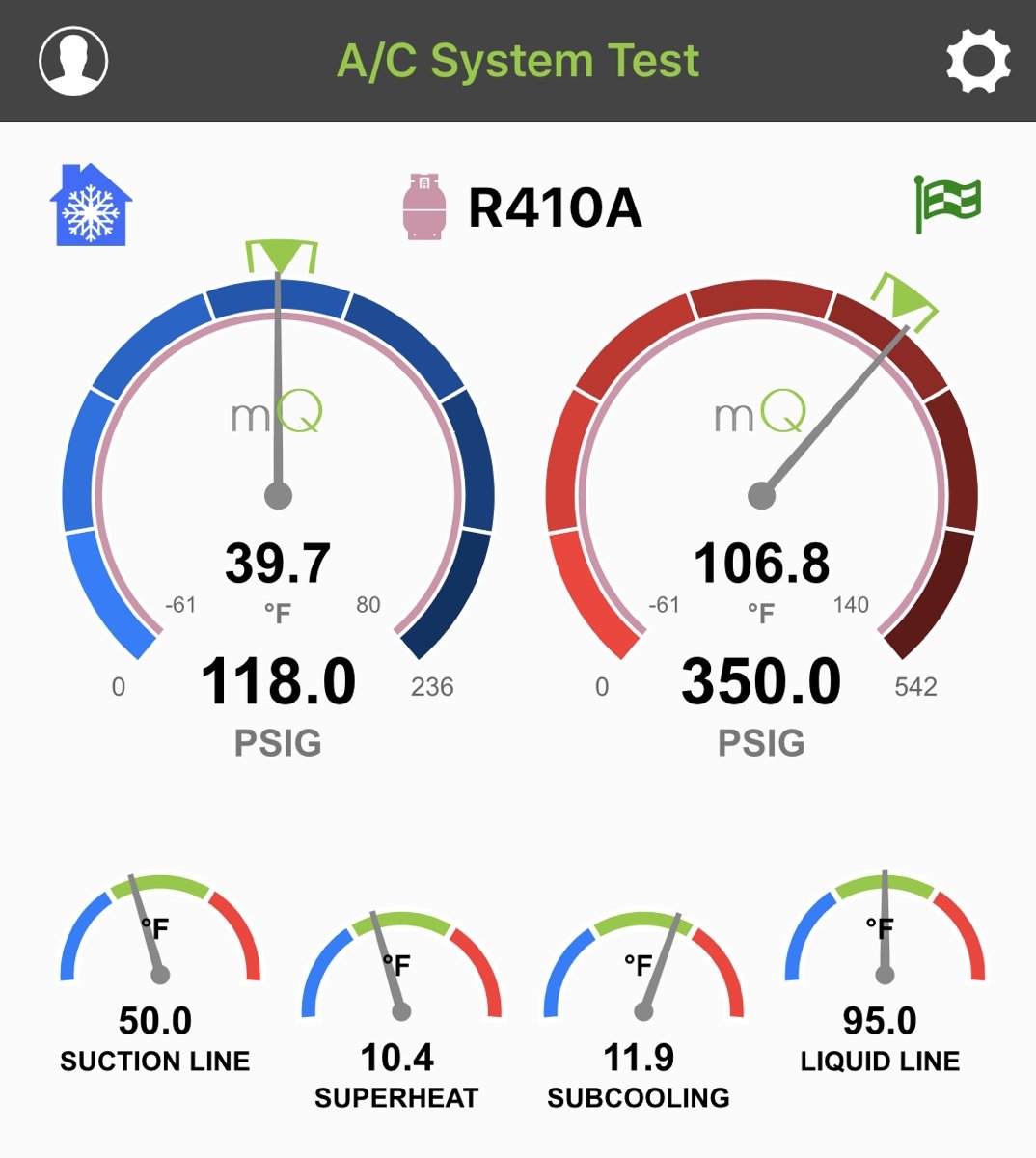[5 Easy Steps] How To Check Refrigerant Level In AC Units

You’re in the middle of a heatwave, and your air conditioner has been working overtime to keep your home cool and comfortable. But suddenly, you notice that the air coming from your vents isn’t as cold as it used to be, and your AC seems to be running constantly without effectively cooling your space.
What could be causing this issue with your home air conditioner? There’s a strong possibility that your AC unit is low on refrigerant.
Refrigerant is the lifeblood of your air conditioning system, responsible for absorbing heat from your home and releasing it outside. Without the proper freon level, your AC can’t function efficiently, leaving you hot and bothered.
But did you know that refrigerants, while essential for keeping us cool, also pose environmental challenges? According to the Environmental Protection Agency (EPA), some refrigerants can contribute to ozone depletion and climate change when released into the atmosphere.
That’s why it’s important to regularly check your AC’s refrigerant level and address any issues. In this article, we’ll walk you through five simple steps to check your air conditioner’s refrigerant level, helping you keep your cool and do your part for the environment.
Contents
- 1 What Are Refrigerants and Why Are They Important?
- 2 Types of Home Air Conditioner Refrigerants
- 3 5 Steps to Check AC Refrigerant Levels in AC
- 4 Signs Your Air Conditioner Has Low Refrigerant Levels
- 5 How to Maintain Proper Refrigerant Levels
- 6 Call HVAC Angel To Recharge Your Refrigerant
- 7 Frequently Asked Questions
What Are Refrigerants and Why Are They Important?
Refrigerants typically gases or liquids, undergo a continuous cycle of compression and expansion, absorbing heat from indoor air and dissipating it outside.
In a home AC system, the refrigerant flows through a series of components, including the compressor, condenser, expansion valve, and evaporator. As the ac unit’s refrigerant passes through the evaporator coil, it absorbs heat from the indoor air, cooling it down.
The refrigerant then travels to the compressor, where it is pressurized and pushed through the condenser coil, releasing the absorbed heat outdoors. This process continues, effectively transferring heat from inside your home to the outside environment.
According to the U.S. Environmental Protection Agency (EPA), an ideal refrigerant should possess several key properties. In addition to having the desired thermodynamic characteristics, a perfect refrigerant would be nontoxic, nonflammable, completely stable inside a system, environmentally benign even with respect to decomposition products, and abundantly available or easy to manufacture.
Types of Home Air Conditioner Refrigerants
As technology advances and environmental concerns grow, the HVAC industry has seen a shift in the types of refrigerants used. Let’s take a closer look at three common types of refrigerants:
1. R-22 (Freon)
For many years, R-22, also known as Freon, was the most widely used refrigerant in air conditioners. However, due to its harmful effects on the ozone layer, the EPA has mandated a phase-out of this substance, meaning that if your older system uses Freon and requires a refrigerant recharge, you may face difficulties finding the product and will likely encounter higher costs.
2. R-410A (Puron)
As an eco-friendlier alternative to R-22 for home air conditioners, R-410A, or Puron, was developed. This refrigerant has a lower global warming potential compared to Freon, making it a more environmentally conscious choice.
It’s important to note that R-410A still contains some hydrofluorocarbons (HFCs) that can contribute to climate change if not handled properly. If your AC unit uses R-410A, you should regularly check the refrigerant level and address any leaks promptly to minimize environmental impact.
3. R-32
Currently, R-32 is considered the most environmentally friendly refrigerant option for air conditioners. With a significantly lower global warming potential compared to both R-22 and R-410A, R-32 has become the preferred choice for many newer systems. R-32 is also highly efficient, helping to reduce energy consumption and lower utility bills.
5 Steps to Check AC Refrigerant Levels in AC
It’s important to learn how to check your AC refrigerant levels for your unit to run efficiently. Here’s a step-by-step guide to know how to check the refrigerant level in your AC unit:
1. Confirm What Type of Refrigerant Your Home AC Has
Start by identifying the type of refrigerant your system uses. This information should be listed on the type plate of your air conditioning unit. Freon (R-22) is a common type of refrigerant, but newer systems may use more environmentally friendly alternatives like R-410A or R-32.
2. Check the Refrigerant Pressure
Locate the pressure gauges on your system to check the pressure. They indicate the high and low pressure, as well as the suction and discharge pressure. If the pressure is low, it may be a sign that your refrigerant is leaking.
3. Take Evaporation and Condensation Readings
Using a refrigerant slider, set it to “dew” for evaporation and “bubble” for condensation. Write down the temperature readings for each setting, as these will be used to check the freon level.
4. Take Refrigerant Temperature Readings

5. Calculate Refrigerant Level
To determine the superheating temperature, subtract the evaporation temperature from the suction pipe temperature. For subcooling, subtract the discharge pipe temperature from the condensation temperature. If the calculated temperatures fall within the 10K and 5K range, respectively, your system is operating with the correct refrigerant level.
Signs Your Air Conditioner Has Low Refrigerant Levels
As a homeowner, it’s essential to be aware of the signs that tell that your ac refrigerant levels are low. By recognizing these indicators early, you can take steps to address the issue and prevent further damage to your air conditioning system. Here are some common signs of low freon in your ac unit:
1. Hissing Noises
If you hear hissing or bubbling sounds coming from your AC unit, it could be a sign of a refrigerant leak in your ac. As it escapes through the leak, it can create these distinctive noises, alerting you to the problem.
2. Ice Found On AC Unit
Low freon levels can cause the evaporator coil to become too cold, leading to the formation of ice or frost on your AC unit. If you notice ice buildup on your unit, it’s a strong indication that the refrigerant level is low.
3. Increased Energy Bills
When your AC unit’s freon levels are low, it has to work harder to cool your home, resulting in longer running times and increased energy consumption. If you notice a sudden spike in your energy bills without a corresponding increase in usage, it may be due to low refrigerant levels.
4. Warm Air Blowing From Vents
One of the most obvious signs of low refrigerant is when your AC starts blowing warm air instead of cool air. If you notice that the air coming from your vents is not as cold as it should be, it’s a clear indication that your unit is struggling to cool your home effectively.
5. Short Cycling
Short cycling refers to the frequent turning on and off of your unit. When the refrigerant level is low, your AC system may struggle to maintain the desired temperature, causing it to cycle more frequently than normal. This can put additional strain on the system and lead to increased wear and tear.
6. Reduced Cooling Capacity
If you notice that your air conditioner is no longer able to cool your home as effectively as it once did, it could be a sign of insufficient refrigerant levels. As the amount of refrigerant in the system decreases, so does its ability to transfer heat and provide adequate cooling.
How to Maintain Proper Refrigerant Levels
Here are some key steps you can take to keep your AC’s coolant levels in check:
1. Regularly Check Refrigerant Level In AC
Schedule annual AC maintenance with a qualified HVAC technician to detect issues early and prevent them from escalating into more substantial problems. During these inspections, the technician will check your AC’s refrigerant line and address any concerns.
2. Refrigerant Leak Detection
According to regulations, a leak inspection must be conducted every 12 months for systems with a refrigerant charge above 50 pounds. An electronic leak detector, also known as a sniffer, can be used to identify leaks. This device has a virtual leak indicator and can emit noise if a leak is detected. However, keep in mind that these devices may not be accurate in windy conditions.
3. Correct Refrigerant Type
Make sure that your AC system is using the correct type of refrigerant as specified by the manufacturer. Using the wrong refrigerant can impair system performance, void warranties, and result in damage to your air conditioner. If you’re unsure about the type of refrigerant your AC uses, consult your owner’s manual or contact a professional.
4. Refrigerant Recharging
If your AC is low on refrigerant, it will need to be recharged. This process should only be performed by a licensed technician, as refrigerants can pose health risks if not handled properly. The EPA warns that the risks associated with the use of refrigerants in air conditioning equipment can include toxicity, flammability, asphyxiation, and physical hazards.
5. Seal and Insulate Ductwork
Properly sealed and insulated ductwork minimizes air leaks and ensures efficient airflow. This can help maintain the proper coolant level in your system by reducing the strain on the compressor and other components. Inspect your ductwork regularly and have any leaks or damage repaired promptly.
Call HVAC Angel To Recharge Your Refrigerant
Is your air conditioner blowing warm air or struggling to keep your home cool? It might be time to check your AC’s refrigerant levels. Low refrigerant can lead to reduced cooling capacity, increased energy bills, and even damage to your AC unit. But don’t worry, HVAC Angel is here to help!
At HVAC Angel, we understand the importance of maintaining the proper refrigerant level in your air conditioning system. Our team of certified technicians has the knowledge, experience, and equipment necessary to accurately diagnose and resolve any refrigerant-related issues.
Our technicians are trained to handle all types of refrigerants safely and in compliance with EPA regulations, making sure that your system is recharged correctly and efficiently.
Don’t let low refrigerant levels leave you hot and bothered. Contact HVAC Angel today to schedule your AC refrigerant recharge service. Trust our experts to handle all your AC maintenance and repair needs with professionalism and care.
Frequently Asked Questions
1. Will AC stop working if refrigerant is low?
If your AC is low on refrigerant, it may still operate but with reduced cooling capacity. As the refrigerant level continues to drop, your air conditioner will struggle to cool your home effectively, eventually leading to system failure if the issue is not addressed.
2. How long does AC refrigerant last?
AC refrigerant is designed to last the lifetime of your air conditioning system, typically 10-15 years. However, leaks can occur, causing the refrigerant level to drop and requiring professional recharging.
3. How often does AC need refrigerant?
Ideally, your AC should never need refrigerant added unless there is a leak in the system.
4. Is it OK to run AC without refrigerant?
No, running your air conditioner without refrigerant can cause severe damage to the compressor, leading to costly repairs or even the need for a complete system replacement.
5. Is it safe to smell refrigerant?
No, it is not safe to smell refrigerant. Inhaling refrigerant can cause dizziness, headaches, nausea, and even asphyxiation in high concentrations.
6. Can AC lose refrigerant without a leak?
No, your air conditioner cannot lose refrigerant without a leak. Refrigerant is not consumed during the cooling process; it circulates in a closed loop.



